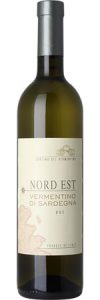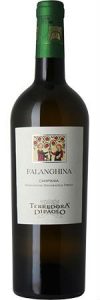We tasted: Pinot Blanc 1er Cru Cotes de Grevenmacher, Domaines Vinsmoselle (Luxembourg), Vinoteca, £14.50
Tasting Notes
 Emma says: “And so for the final white grape in our 52 week challenge. The order of the grapes we have tasted has been quite random, but I’m pleased we have this one to end with.
Emma says: “And so for the final white grape in our 52 week challenge. The order of the grapes we have tasted has been quite random, but I’m pleased we have this one to end with.
It has been difficult to track it down. It doesn’t seem to be favoured on any supermarket or bar list. But we’re fortunate to live in London where just about every grape can be found and we were finally able to find it in a favourite wine shop/bar of mine, Vinoteca.
Interestingly our one is from Luxembourg which is perhaps one of the few wine growing regions I have never tasted wine from. A fitting final white adventure. Pinot Bianco is the Italian name for this grape but it is also known as Pinot Blanc in France, or Weissburgunder in Austria or Germany. It is grown in similar northern Italian regions to Pinot Grigio and does share a sprightly character with delicate fruit flavours. However I’ve always felt that Pinot Bianco has a touch more tutti frutti appeal and a creamy finish which means it is more interesting to me. I wish we’d see a few bland Pinot Grigios give up their shelf space to this grape.
To the wine we tasted. I thought it was a brilliant example. The cool climate of the Luxembourg hills gave it a really spritzy and zingy acid freshness. The aroma was delicate but fragrant with hints of papaya, peach and orange blossom. To taste it was chalky and mineral but with that gentle apricot and candied peel character, plus touches of acacia honey and cream to give it a soft sweet finish. This tasting reaffirmed to me that Pinot Bianco is really an overlooked grape, let’s hope a few of our readers agree with me.
A final geek fact. Pinot Bianco is actually a genetic mutation of Pinot Noir. Sometimes Pinot Noir produces the odd white bunch of grapes as a single cane on a vine and this is Pinot Bianco. Perhaps this is the explanation for the underlying fruit-y-ness of the grape.”
Andy says: “This is very probably the first time I have ever tasted Pinot Blanc, so I will have to take Emma’s word for it that it is a brilliant example.
The first thing to note is the acidity. It’s very high, and a little wince inducing, but not near as much as the eye watering Bacchus from a few weeks ago. When ice cold, the wine was very pleasant to drink, but as it warmed up it became somewhat hard going and started to stray into the still-as-yet-undefined ‘winey’ zone.
It was fragrant and there are hints of fruit, but none that I could readily identify. If only wine had flavour characteristics borrowed from crisps (chips for our American friends), then I’d be world class at this. I again got what I call coconut, like a coconut ring biscuit (cookie for our American friends), and perhaps this is what Emma describes as ‘cream’. I sense the coconut flavour a lot in wine so really do need to nail down what it is. It’s not oak, definitely not in this case.”
Buying Guide
Pinot Blanc or Pinot Bianco are the same grape made in France or Italy. A grape that is often confused with Pinot Grigio and does share some flavour characters in its crisp orchard fruit profile. However it can deliver wines with a bit more interest and charm, expect more peachy fruit and a touch more ripeness in flavour. We will be seeking one out from Alsace as a region that tends to produce some of the most characterful styles.


 Emma says: “Godello isn’t the easiest grape to find so I was really pleased to spot one in the trusty local Majestic. In fact, that is one of the things I’ve enjoyed the most of our 52 Grapes experience, it has made me peek outside the supermarket doors where I work to see what interesting things the others are getting up to.
Emma says: “Godello isn’t the easiest grape to find so I was really pleased to spot one in the trusty local Majestic. In fact, that is one of the things I’ve enjoyed the most of our 52 Grapes experience, it has made me peek outside the supermarket doors where I work to see what interesting things the others are getting up to.


 Emma says: “I was feeling a little off last night so apologies if this note is short. Maybe you’ll have to trust Andy’s note as the true evaluation of our grape this week.
Emma says: “I was feeling a little off last night so apologies if this note is short. Maybe you’ll have to trust Andy’s note as the true evaluation of our grape this week.
 Emma says: “I was surprised that the search for Furmint wasn’t that hard, but maybe that is in contrast to the Marsanne mission last week. Oh I miss the heady weeks of tasting Merlot. I’m lucky to have a gorgeous wine bar/come shop near the office called Vinoteca and found a Furmint there. Served to me by a very excited Hungarian who was pleased I was specifically looking for a wine from her native country.
Emma says: “I was surprised that the search for Furmint wasn’t that hard, but maybe that is in contrast to the Marsanne mission last week. Oh I miss the heady weeks of tasting Merlot. I’m lucky to have a gorgeous wine bar/come shop near the office called Vinoteca and found a Furmint there. Served to me by a very excited Hungarian who was pleased I was specifically looking for a wine from her native country.






 Emma says:”I really wanted to find a 2017 vintage Verdejo this week because I have always seen this as a grape that needs to be youthful to show well.
Emma says:”I really wanted to find a 2017 vintage Verdejo this week because I have always seen this as a grape that needs to be youthful to show well.
 Emma says: “An Italian grape this week and one with a name that I think does it a disservice. Pronounced Fal-an-gheena, it really doesn’t have the prettiest of names. It has an aggressive tone which is a sensory turn off for me. Asking for a glass of Gavi or Fiano (other Italian whites) in a wine bar sounds so much more elegant.
Emma says: “An Italian grape this week and one with a name that I think does it a disservice. Pronounced Fal-an-gheena, it really doesn’t have the prettiest of names. It has an aggressive tone which is a sensory turn off for me. Asking for a glass of Gavi or Fiano (other Italian whites) in a wine bar sounds so much more elegant.